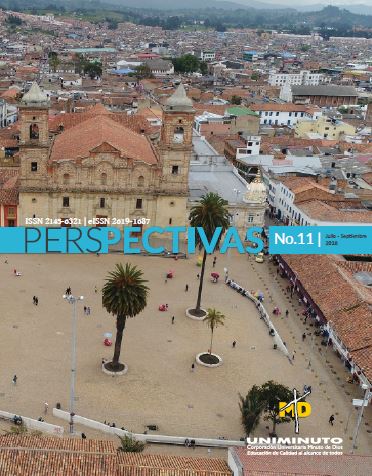A critical look at communicative strategies for the conservation of cultural heritage in zipaquirá
Article Sidebar
How to Cite
Article Details
Main Article Content
Abstract
Zipaquirá is the provincial capital of Sabana Centro. It concentrates an important part of the market, animal husbandry and tourism offer of the region. The interaction of these aspects, including fast population growth, with the territory puts at risk the cultural heritage of the Zipaquira people, as well as the
identity it creates and shapes. In response to this situation, social groups and government entities are working on the generation of communicative strategies which account for the importance of cultural goods. However, they have not been as successful as expected. By analyzing the effectiveness of those campaigns, we hope that the municipal cultural agencies boost those strategies through an assertive dissemination which helps to strengthen the preservation and spreading of values associated to cultural heritage. Thus, future generations will raise the community’s awareness towards cultural goods care.
That will trigger a change of attitude in the inhabitants, who will be more involved in the scheduled activities
and will enjoy them. These actions as a whole will promote the community’s transformation and
sociocultural development.
References
Castiblanco, Y. y Perassi, M. (2016). Las políticas culturales en la construcción del patrimonio inmaterial y el papel de la memoria histórica en el municipio de
Zipaquirá – Colombia. Zipaquirá.
Consejo Municipal de Zipaquirá. (2009). Acuerdo 15. Colombia
Consejo Municipal de Zipaquirá. (2010). Acuerdo 41. Colombia.
García, V. (2007). Estrategias educativas para la vinculación del patrimonio cultural en la educación básica en Venezuela. EDUCERE, 11(39), 673-681
García, Y. (2015). Radio Sutatenza: medio de educación campesina. El Mundo, 28-29.
Gumucio, A. (2004). El cuarto mosquetero: la comunicación para el cambio social. Investigación y Desarrollo, 12(1), 2–23.
Jiménez, M. G. (2012). Interacciones contemporáneas: el patrimonio en los medios de comunicación. Vivat academia, 14(117), 1047-1071.
Melo, R, A. C. (2015). Fortalecimiento de la Identidad Cultural Indígena en niños y niñas del Hogar Social “Semillas de Alegría” perteneciente
al Municipio de Chía. Tesis Doctoral, Universidad de la Sabana
Miranda, C. (2017). El patrimonio local como herramienta educativa. Revista internacional de investigación en ciencias sociales, 13(1), 25-34.
Paz, C. Santos, L. y Vázquez, R. (2010). Publicidad y eficacia publicitaria: influencia de la posición, repetición y estilos publicitarios en la eficacia
de los anuncios televisivos entre los jóvenes. Documento de trabajo, 203, 1-32.
Restrepo, S. (1998). La evolución de la comunicación para el desarrollo. Londres: Tauris.
Ritzer, G. (2001). Teoría sociológica moderna. Madrid: Mcgraw-Hill.
Rodríguez, G., Gil, J. y García, E. (1996). Metodología de la investigación cualitativa. Granada: Ediciones Aljibe
Sanjuán Ballano, B. (2007). Patrimonio cultural y medios de comunicación. Cuadernos PH, IAPH Junta de Andalucía. 21, 31-43.
UNICEF (2017). Comunicación para el desarrollo. Consultado: Febrero 19, 2018, de https://www.unicef.org/spanish/cbsc/index_42329.html
Most read articles by the same author(s)
- Mónica Patricia Perassi, Yeismy Amanda Castiblanco Venegas, The image of gender: graphic communication and representation of women , Perspectivas: Vol. 5 No. 18 (2020): April - June

